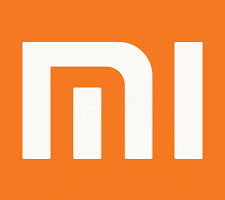Xiaomi: China’s Threat to Apple and Samsung

It’s Not About the Phone!

Xiaomi: China’s Threat to Apple and Samsung
Founded in April 2010 as a lean startup to sell smartphones at cheap prices over the internet, Xiaomi has been seizing share in China at an aggressive clip. According to the research firm IDC in summer 2014, Xiaomi overtook Samsung (by volume) and became the largest smartphone vendor in China and is now the third largest smartphone maker in the world followed by Lenovo and LG. It also has emerged as one of the most valuable private companies in the world with a market capitalization of $45 billion. How did Xiaomi manage to climb the ladder of success in just 4 years? I think the reasons crucial to Xiaomi’s amazing success are its unconventional and innovative online business model and wickedly smart, just-in-time approach towards supply chain management, creating a highly effective alignment between the operating and business model of the company.
Innovative Business Model: It’s Not About the Phone

Xiaomi is the Chinese word for “millet”, the logo “MI” stands for ‘Mobile Internet’ and also ‘Mission Impossible’, explained by its CEO Lei Jun. Xiaomi employs a unique business model that differentiates itself in every phase of customer journey. Xiaomi does not have a single factory or physical store, a radical departure from the traditional inventory management utilized by other major manufacturers in the smartphone space. Also, unlike a traditional company that relies on brand and product marketing to build awareness, Xiaomi uses the power of crowd sourcing and online communities to create awareness of its products and at the same time ensuring that the products built are what customers really want. As explained by Hugo Barra, Xiaomi’s global vice president, “We are an internet and a software company much more than … a hardware company.”
Xiaomi powers their phones through a customized android operating system called MIUI. Unlike other companies Xiaomi lets users help make decisions on the customization and additional features that will go into the next MIUI release. To sell high-quality smartphones at such low price, Xiaomi keeps each model on the market up to 18 months. It makes money by charging for services and accessories that accompany the phones. The effective business model ensures reduction of costs in logistics, advertising, storage, delivery and managing surplus materials. At the same time, it delivers high quality products to its buyers and win over a legion of loyal fans to test new features and drum up enthusiasm for the company.
Operating Model
Many still wonder how Xiaomi manages to selling high-end phones at rock-bottom prices, which it claims to be just above cost. What Xiaomi has done, is as follows:
- Procurement of Components: To lower procurement cost and shorten the process, Xiaomi takes components from other companies (for example, the Mi3 comes with a Sony camera, Sharp/LG display and a Philips flash). Once these components are ready, they’re shipped to Shenzen – the biggest port near Hong Kong and are assembled in a local factory.
- Manufacturing: The manufacturing is completely dynamic based on orders. Once Xiaomi gets a particular number of orders, only then will they begin procuring the components.
- Inventory: Since demand drives the manufacturing process, there’s no surplus raw material to be managed. Inventory costs are automatically reduced.
Xiaomi has drastically cut down on the traditional costs associated with inventory, marketing and distributing, by relying purely on the internet sales. Since Xiaomi’s price would typically be 20%-30% of the price of a Samsung or Apple phone with similar specifications, this competitive price creates a huge demand in the market. At the same time, Xiaomi puts only limited quantity of phones for sale. In a sense, all new models are sold in limited volumes as “batch sales”, which strongly drives consumer fervor and inculcates built-up demand. Thanks to competitive pricing, limited quantities and online buzz, Xiaomi was able to sell out its new models within a few hours (or even minutes).
Xiaomi’s highly effective alignment between its operating and business models contributed to its meteoric rise. By leveraging social marketing, online communities and E-commerce to the maximum, Xiaomi is able to create a huge customer base in China.
Challenges
Can Xiaomi sustain its comparative advantage while competitions increase?
Without a doubt, Xiaomi has a very unusual and interesting business model that many start to emulate. China’s largest, deepest-pocketed gadget companies—Lenovo, Huawei Technologies and ZTE Corp — have started to copy Xiaomi’s model. It’s hard to say if Xiaomi can stay at the top when China’s market are flooded with high-end, low-cost devices from local competitors. In addition, Xiaomi does not yet have much of a patent portfolio, leaving it vulnerable to lawsuits from competitors.
Sources:
http://techcrunch.com/2014/10/29/xiaomi-now-the-worlds-third-biggest-smartphone-maker-says-idc/
http://www.strategos.com/business-model-innovation/
https://www.tradegecko.com/blog/heres-the-secret-behind-xiaomis-disruptive-success
http://www.bloomberg.com/bw/articles/2014-06-04/chinas-xiaomi-the-worlds-fastest-growing-phone-maker
http://www.wsj.com/articles/rivals-try-to-reinvent-xiaomi-business-model-1441658086
http://insights-on-business.com/electronics/the-xiaomi-story/



I’ve heard a lot about Xiaomi, but never really understood how it keeps its prices low! One thing you mentioned was the fact that beyond price, MIUI is another selling point. How much does the company invest into this customized OS versus its hardware? And how much do consumers find this to be a driver for purchase? I’d be curious to understand whether over time, this becomes a big cost base that Xiaomi will have to find ways to optimize like it has done with the hardware.
Thanks for your feedback, Luna! Based on the quote of their global VP, “We are an internet and a software company much more than … a hardware company.” I think strategically Xiaomi has been always prioritizing its customized OS. As MIUI runs on the open-source android system, it encourages developers from all backgrounds to contribute to its platform. I think the more users it attracts, the more momentum it’s building to promote innovation.